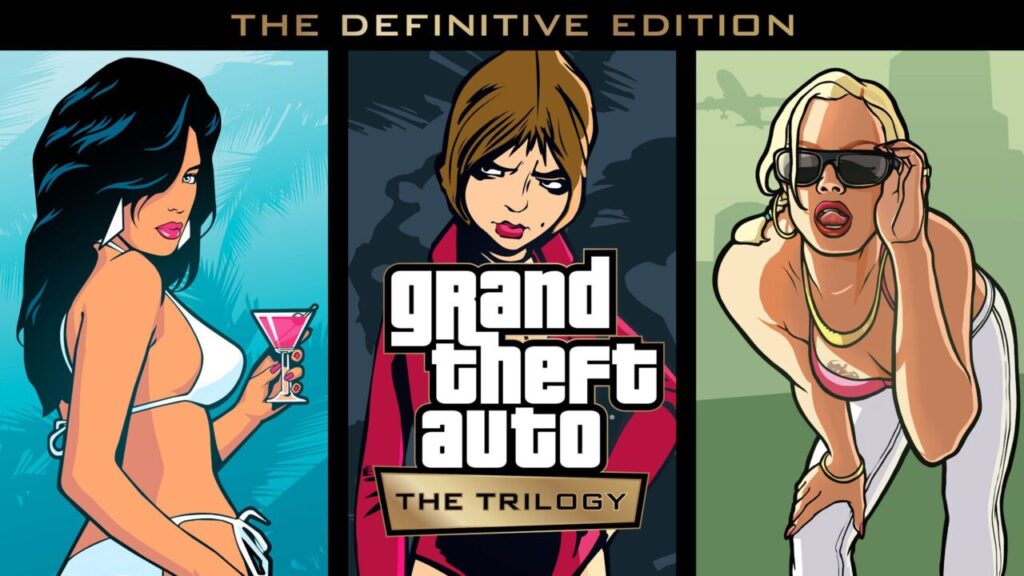
Grand theft auto is a crime, but Grand Theft Auto: The Trilogy – The Definitive Edition is an atrocity. Just is it possible that some of the most important and successful series of games of all time can be treated with such apathy by its developer and publisher?
These were some of the most played games on the PlayStation 2 and Xbox. They set the standard for open world sandbox crime action games. The most heinous crime of all is that all prior versions of the games in the trilogy have been delisted*. Unless original legacy copies are acquired second hand, they can never be bought ever again.
* Editor’s Note: Rockstar Games have announced they will be adding the classic version back to PC, along with apologizing for the game’s technical issues.
How does one bungle remasters of PlayStation 2 games? When THQ Nordic is able to hit it out of the park with remasters of their Saints Row games, Sponge Bob and Destroy All Humans!, why can’t Rockstar Games, the most successful game studio of all time, do it at all?
Grand Theft Auto: The Trilogy – The Definitive Edition
Developer: Grove Street Games, Rockstar Games
Publisher: Rockstar Games
Platforms: Windows PC, Nintendo Switch (reviewed), PlayStation 4, PlayStation 5, Xbox One, Xbox Series X|S, Android, iOS
Release Date: November 11, 2021
Players: 1
Price: $59.99 USD
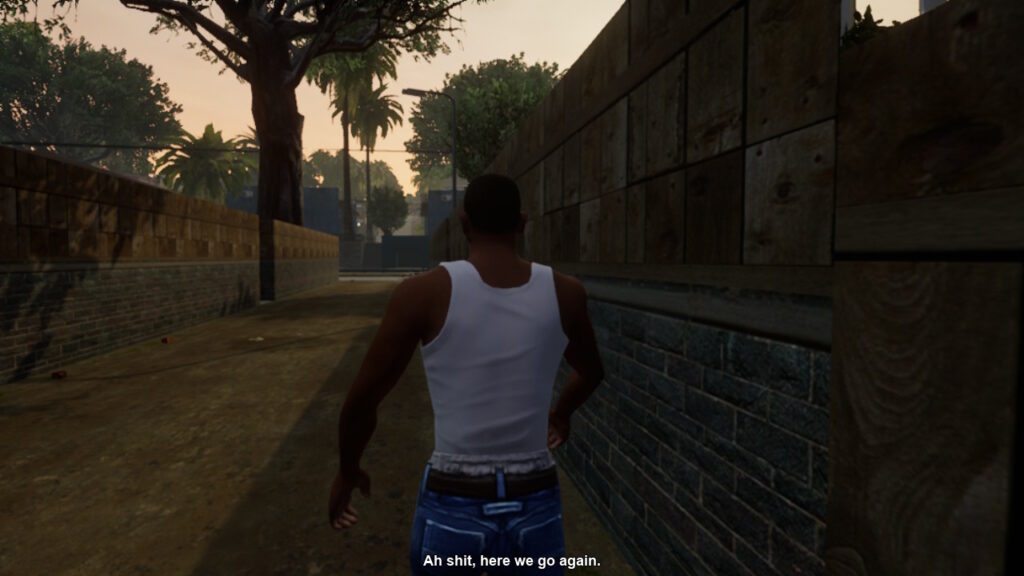
Grand Theft Auto III is the most simple of the trio, and even though it lacks the refinements that later entries would gain, it has old school charm to it. It has the smallest amount of landmass, making it the easiest to to traverse. Because it was one of the earlier games in the franchise, the tone is a lot more loose.
There is a lot more freedom to do whatever in III. Many missions can be broken and trivialized if the player knows what to expect, and comes fully equipped and armed to the teeth. Know where a banshee is parked? Go get it and outrun all triads. Know the cheat to spawn a Rhino tank? Summon one to blow away all the other racers and complete the race very slowly for laughs.
III is the least story-focused, and its hands-off approach has a lot to do with the fact the protagonist is silent and barely a character. Known as “Claude” by fans, his name is never spoken in game, and he comes off like a more idiot savant version of Ryan Gosling’s character in Drive. After so many colorful characters in this franchise, coming back to a blank slate guy like Claude feels refreshing.
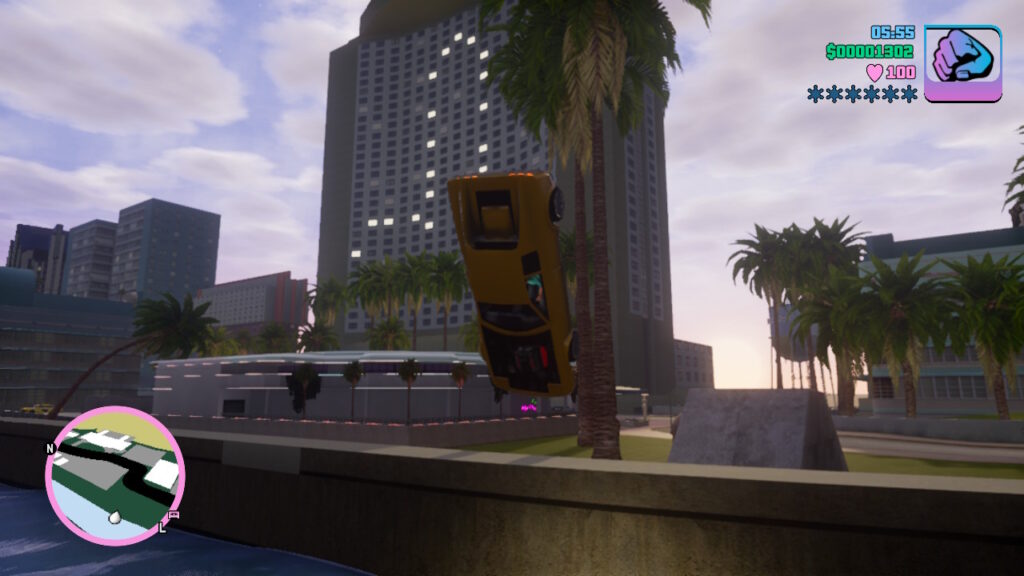
Claude may be just an vessel for the player to commit heinous crimes, but there is a story too. It may not be like much, but a lot of it is just Claude doing dirty work for who ever will give it to him. There are a few betrayals here and there, but when it all climaxes in the end- there is a profound feeling of closure. Without a purpose, Claude feels like a hallow shell when the story is done.
Vice City is where Grand Theft Auto came into its own, and becomes more like the modern entries everyone knows today. Tommy is a voiced character (by a disinterested Ray Liotta no less), and he has very defined goals and motivations.
Even though he is a blatant expy of Tony Montana from Scarface and Henry Hill from Goodfellas, his actions and personality are a lot closer to Nicky Santoro from Casino. Tommy is a mid level mafia crewman. He gets screwed in a bad assignment, and seeks to make it out on his own in 1980s Vice City.
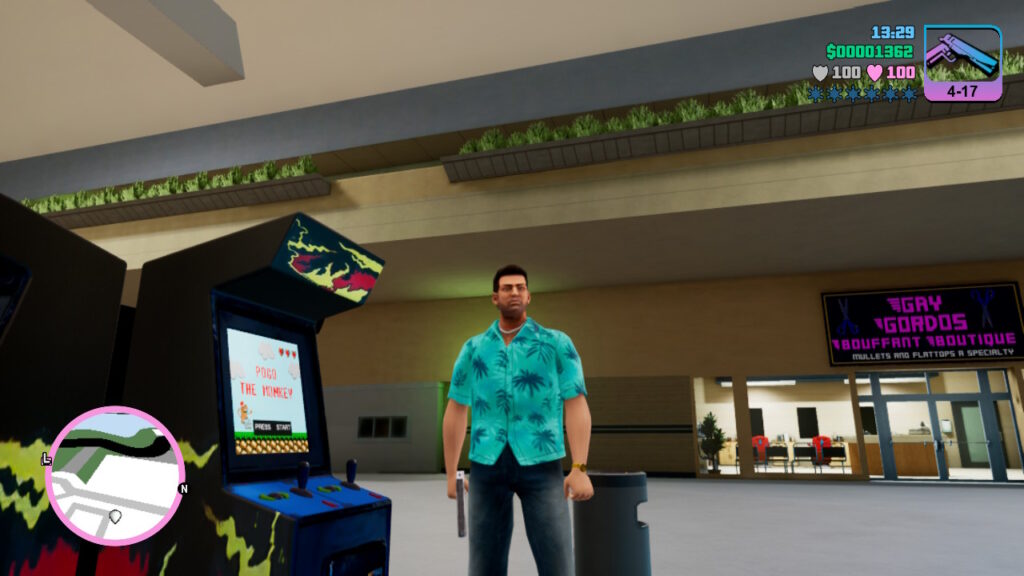
One thing leads to another, and the plot becomes a pastiche of many 1980s crime stories. Subtle references to Less Than Zero, to the blatant ones like Scarface and Miami Vice; movie fans will have a ball picking apart the sly homages and satire through Tommy’s conquest.
San Andreas is the entry where Grand Theft Auto was bursting at the seams with features and story. CJ’s rise from hood rat to crime boss who gets his hands dirty is a hilarious and grand journey, with him partaking in the franchise’s most insane stunts.
Many fans feel that San Andreas is the best entry for a good reason. The map is enormous, and the deep role playing game elements allow gamers to build CJ and customize him in ways the series has never tried again since. The developers flew off the handle when it came to features and vehicles in San Andreas- never has an open world sandbox crime game had as much content as this.
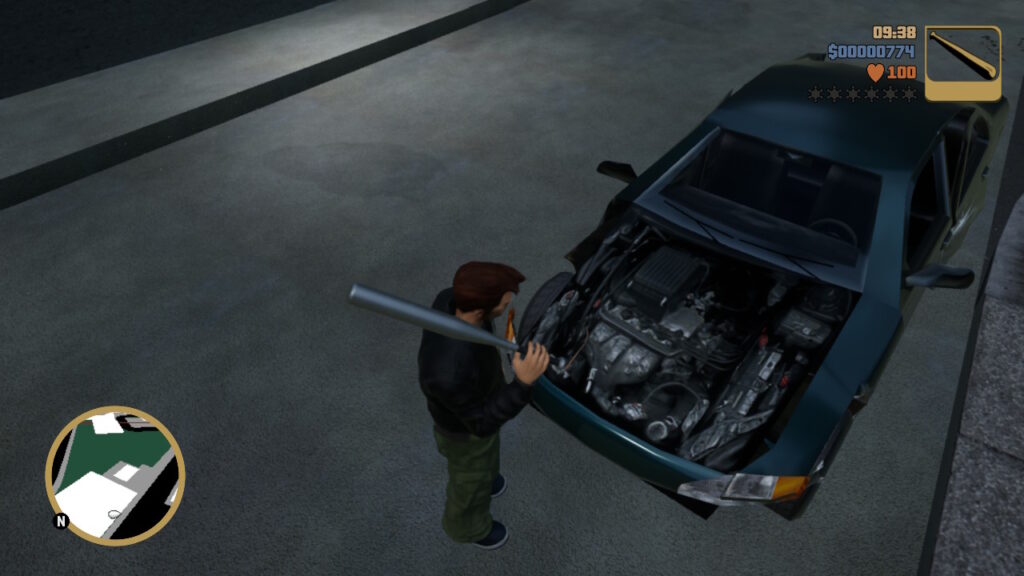
The core gameplay between all three games is intact. Mostly. Claude, Tommy, and CJ are dropped in big cities, with mission markers on the map that gradually open more of the city as the story progresses. Players are free to explore, find hidden challenges, collectibles that unlock weapons at safe houses, and to perform insane stunts.
Most importantly, the trilogy offers the ultimate catharsis of being able to break all the rules that we face in our everyday lives. This has been a major point of controversy with Grand Theft Auto to this day, because the open ended nature of the game’s design allows anyone to engage in their inner sadism. Defying the police, blowing up a convoy of feds, and heroically evading them is something every man dreams of.
The hard reality is that we are all average, and we will never amount to anything great. Grand Theft Auto gave gamers an outlet to release that hatred on dullard NPCs who say the same few canned lines. There are people like that in real life who contribute nothing, only take up space, and people would love nothing more than to run them all down with a truck. It’s no wonder why Grand Theft Auto is the most successful franchises ever.
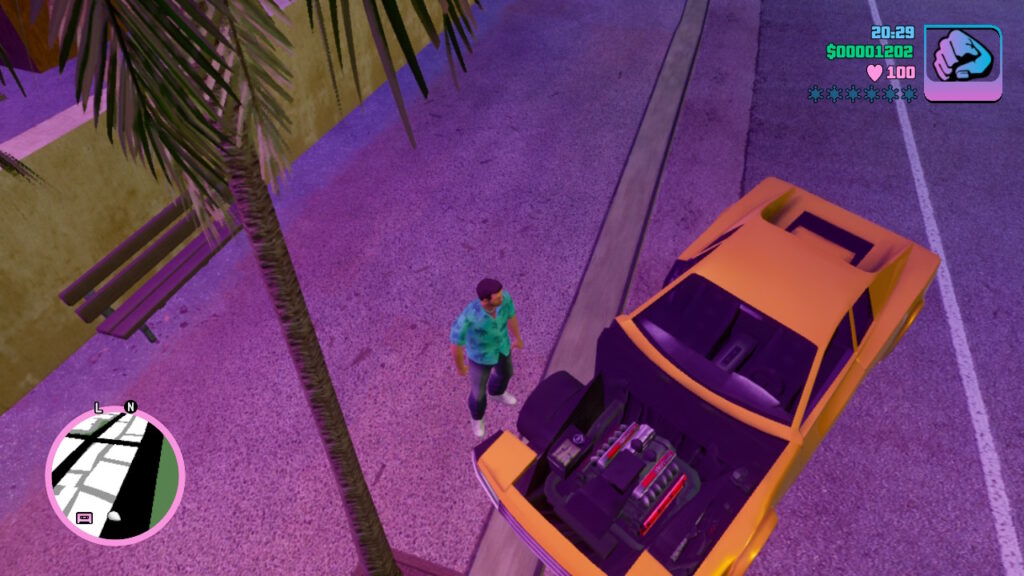
As enjoyable as the games in this trilogy have been, they were not perfect. There was room for improvement, and some of the mechanics could have used some refinement. These were games from the PlayStation 2 generation, and some aspects like how the z-targeting style auto-aiming works or the lack of camera control to the analogue stick could be addressed.
Regretfully, Grand Theft Auto: The Trilogy – The Definitive Edition is probably one of the worst remasters ever released. Flaws that were not present in the originals games, like bizarre collision bugs and missions that become impossible due to glitches, are only slim pickings from the proverbial junkyard of problems faced in these ports.
An overwhelming wave of concern will take hold like a deathly embrace, as the intro cutscene of III plays out. Everything looks wrong; the steely blue hues that set the cool tone that was popular in the 2000s is gone, and characters models look off. The hazy blur effects are not represented at all, and the scene plays out looking very artificial.

Across all three games, character models have been redone entirely, and almost all of them for the worst. The only exception is Claude from III, who has a very basic yet effective design. His reserved mannerisms and lack of expression proved to benefit him, since he gives almost nothing for the remaster developers to butcher.
NPC characters look haggard, and all resemble what happens when humanity trusts a machine to do a man’s job. Apparently, an AI algorithm did a lot of the heavy lifting when it came to “interpreting” the older models into the travesties we have in The Definitive Edition.
The simple PlayStation 2 models and rigs were never meant to be used in this manner, and the results are appalling. Tommy ends up looking like a plastic blow-up doll; rubbery limbs, hotdog-like fingers, and an uncanny face plunges deep within the uncanny valley. It’s a highly disturbing sight to see him in cutscenes.
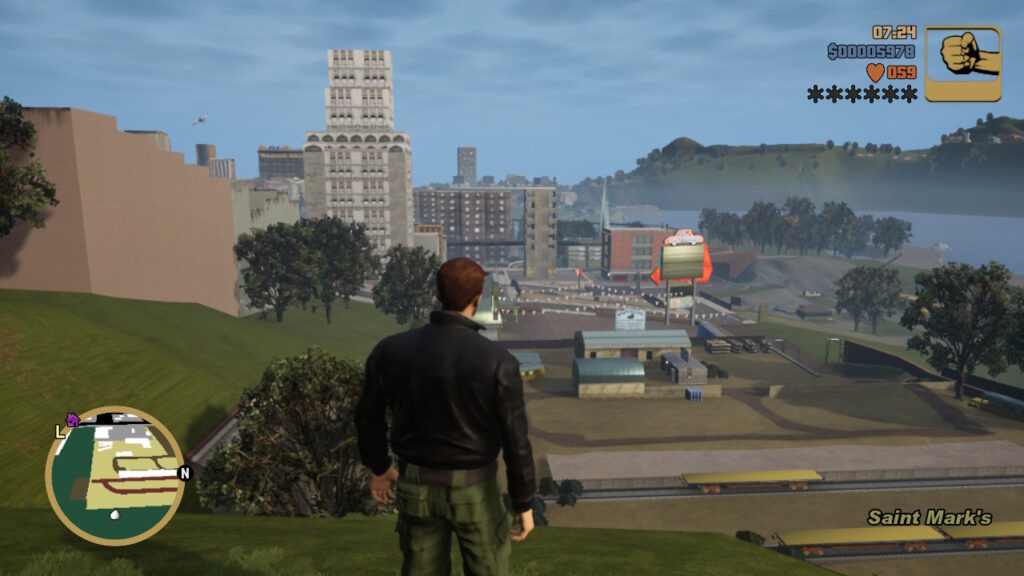
CJ in San Andreas is sadly given the worst end of the stick, and comes out looking the most haggard of the trio. Along with the other Grove Street gang members; their poses and animations look agonizing, as if their bones are all broken and are held together by jelly. Scenes become so distracting due to the mangled models, it becomes impossible to get invested in anything.
The Unreal Engine 4 is capable of so much greater. Destroy All Humans! took a very simple open world action game, and made it look incredible with all new assets that are faithful to the originals. Even Quake Remastered‘s approach to subdued enhanced character models would have been preferred than the monstrous homunculi that crawl the streets in these games.
Worse yet the new effects are applied inappropriately, and fail to capture the atmosphere in all games. The colorful skies that were so atmospheric and set a tone to every scene or while exploring, is nowhere to be scene. San Andreas was remembered fondly for its warmth from its pleasant orange skies, and it’s totally gone in this remaster.
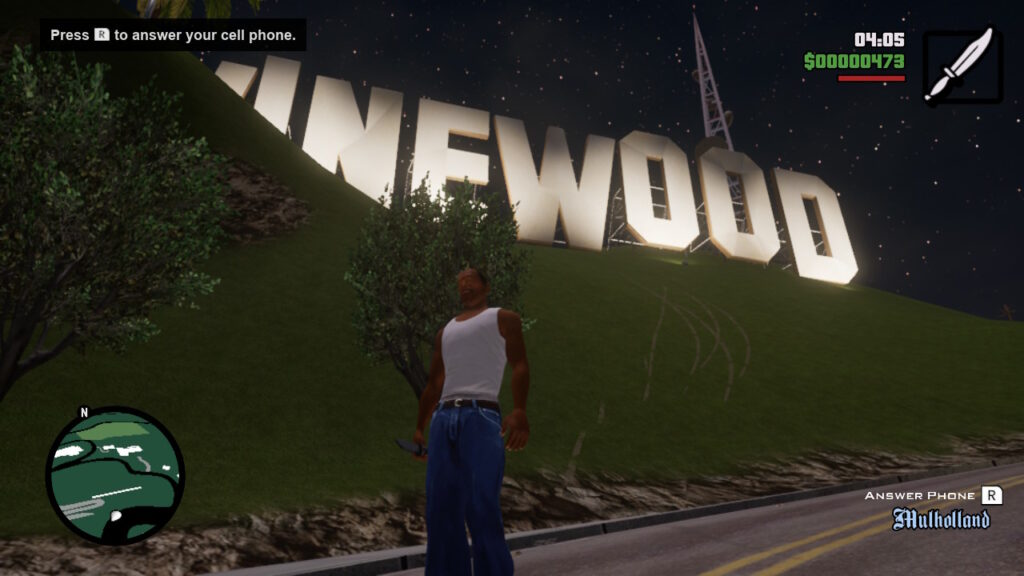
The cold tones in Liberty City are now a lifeless gray, and the worst rain effects completely ruin the ambiance in III. Rain especially has been ruined across all titles, and now looks more like static interference or choppy milk drops than actual weather.
Water effects seem broken, and don’t behave well when lights from a vehicle’s headlights flash on them. The effect looks extremely poor and buggy. Blatant sign texture reuse is embarrassing, with some repeating titles upwards to five times on the side of a single building.
Some older textures remain and clash with the new “art,” creating a terrible juxtaposition. There are even instances of missing textures and gaping holes in models within plain view of walking around. Walking into invisible walls that shouldn’t exist and suddenly appearing traffic suggest that The Definitive Edition is incomplete, and may still be a work in progress.
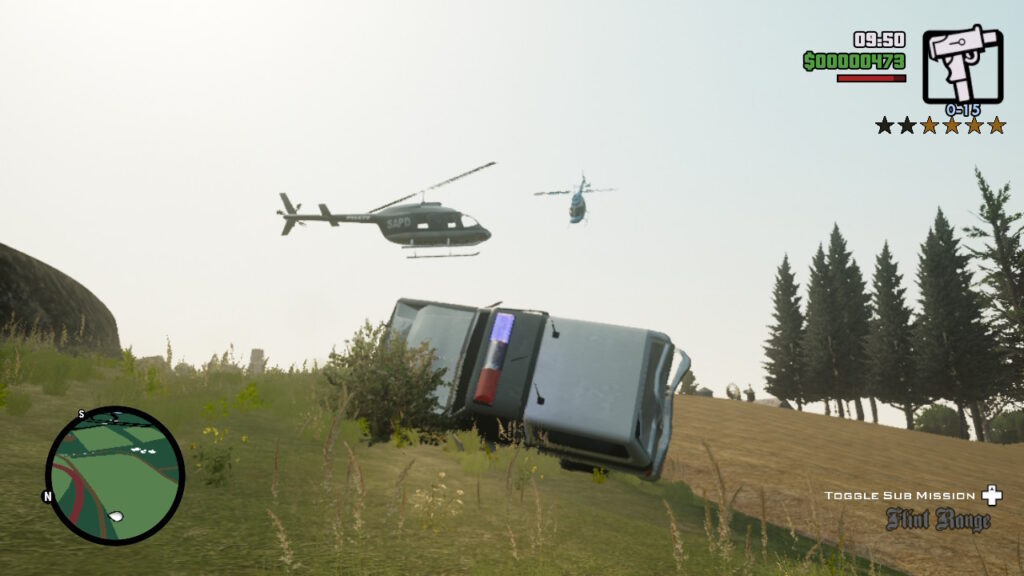
Unreal Engine 4 effects and lighting are inconsistently applied throughout the games. Sometimes characters and objects cast no shadows, and the resulting impression is that things are floating in scenes. Nothing ever feels grounded on Switch, and everything has that vulgar Unreal Engine 4 plastic sheen applied to surfaces that shouldn’t have it. Grass and rough terrain looks like a polished flat surface.
Textures are sloppily applied and poorly mapped. Walking around and paying attention will have anyone notice these errors. Seams are unaligned, and nothing looks natural. The PlayStation 2 versions were obviously not perfect, but it’s fair to give the games coded back in the early 2000s some slack, when the developers are now the most successful of all time.
Rockstar Games has all the resources imaginable, and no mater who was actually doing the dirty work of porting and making these games playable, there should not have been such a gross display of apathy to these legacy titles. The original games got delisted for this*.

The gameplay is also compromised. Anyone who thinks they could stomach visual flubs and missing songs will be in for a rude awakening when they get sent below the map and get wasted because the collision randomly failed to load. It can be easy to fall into a sense of security as players enjoy the added free-aim and 360 camera control, but the reality is that these games were not designed for these mechanics.
Free-aim shooting is bugged, and often leads to unresponsive firing as the poor character model breaks its back trying to run and shoot in the opposite direction. It’s as if it doesn’t know which way to turn its body, and it twists and contorts back and forth trying to be in an optimal position, but can’t.
Thanks to this system, shooting is delayed as the model tries to get into position. Certain actions just don’t mesh with the gameplay at all. The only additions that do work as intended is the weapon wheel and radio station wheel, which makes choices instant.

Other legitimate improvements is the addition of checkpoints that cuts down on the busy work of having to trek back to the mission marker. These make the experience much smoother and keeps the player in the action, which keeps the pacing nice and steady.
Other than these paltry improvements, The Definitive Edition proves to be worse than originals on PlayStation 2 in almost every other facet. Frame rate is also shoddy across all versions, with almost none of them being stable. The Nintendo Switch version is capped at 30, but it rarely maintains it even when compared to the originals on PlayStation 2, which were already pretty shaky.
There is also something unusual with the animation in this compilation, where the player character’s movements appear jerky. The effect is akin to a stop-motion animation, and it defies explanation. It’s something that randomly happens, and it isn’t clear if it’s only in the Switch version.
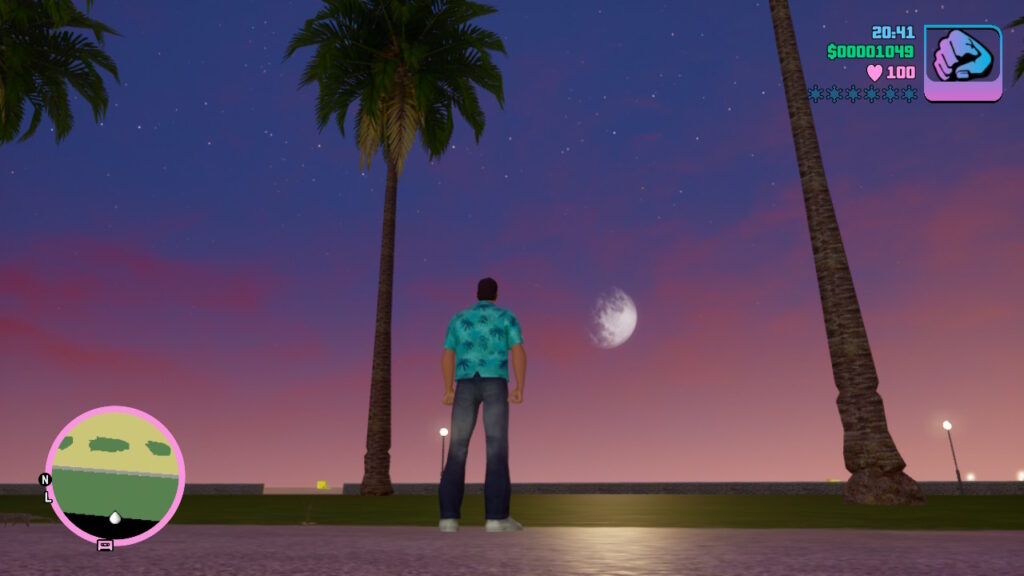
Grand Theft Auto: The Trilogy – The Definitive Edition deserved better. Never mind the lack of parity across all the versions- each platform gets its own flaws to deal with. Sadly, Nintendo Switch is the console that gets the absolute worst way to play any of the games in this trilogy.
It’s unknown to what extent that Rockstar Games will support this product post-release. Unless gamers already owned prior versions; this is what they’ll be stuck with unless in the highly remote possibility that Rockstar Games reverses their motion on the mass delisting*.
This is the Ecco Homo of video games; a crass and destructive mangling of master works. Hopefully, Rockstar Games will see to that Grand Theft Auto: The Trilogy – The Definitive Edition gets regular updates to address the issues. It does not seem likely given how deep these flaws lie*.
Grand Theft Auto: The Trilogy – The Definitive Edition was reviewed on Nintendo Switch using a copy provided by Rockstar Games. You can find additional information about Niche Gamer’s review/ethics policy here.